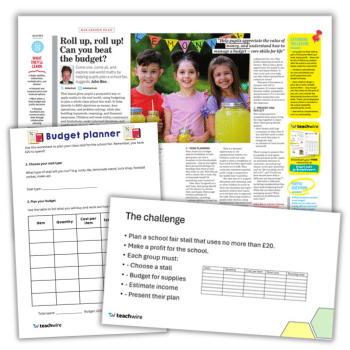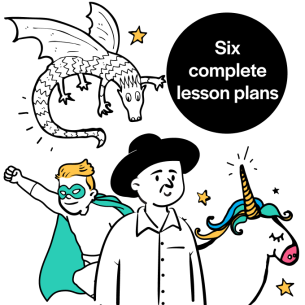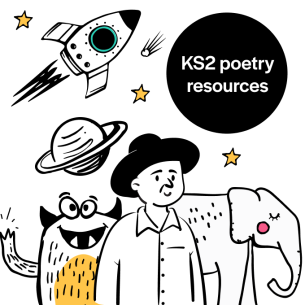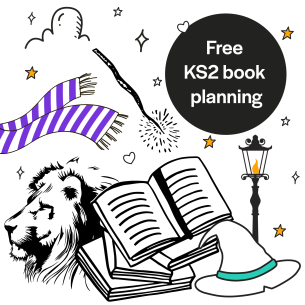PDF lesson plan and worksheet plus PowerPoint
KS2
Years 3-6
Come one, come all, and explore real-world maths by helping pupils plan a school fair with this free KS2 budgeting lesson plan from John Bee…
This lesson gives pupils a purposeful way to apply maths to the real world. They’ll use budgeting to plan a whole-class school fair stall.
It links directly to KS2 objectives on money, four operations, and problem-solving, while also building teamwork, reasoning, and financial awareness.
Children will work within constraints and limitations, make informed decisions, and justify their choices. Whether they go for a tombola, lucky dip, or lemonade stand, this lesson helps pupils appreciate the value of money. They’ll also understand how to manage a budget – a core skill they’ll carry into adulthood.
KS2 budgeting lesson learning objectives
- Apply addition, subtraction, multiplication, and division
- Interpret and compare prices and financial options
- Work within a fixed budget and justify decisions
- Develop teamwork and communication skills through collaborative planning
- Understand basic financial concepts like cost, income, and profit
Starter activity
Begin by showing pupils a few simple stalls they might run at a school fair: a tuck shop, a lucky dip, or a craft table, for example.
Split the class into groups, and tell them each group has £20 to spend on raw materials, and their goal is to design a stall that stays within budget and raises the most money.
Show example prices for common items (e.g. 10 paper cups for £1.50, glitter glue £2.25, small prizes £3.00 for 10).
Discuss key concepts: What does ‘budget’ mean? Why do businesses (and schools) need one? Emphasise that good budgeting involves planning, prioritising, and problem-solving.
John Bee is a former deputy headteacher and maths leader, and is now a school improvement adviser, and mastery specialist for the Maths Hubs Programme.














